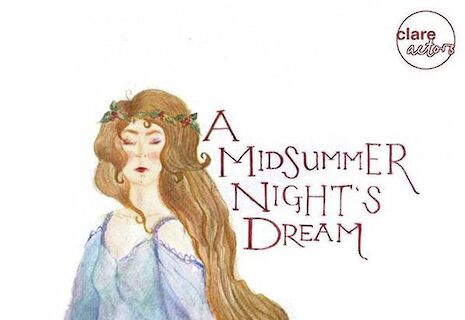Review: A Midsummer Night’s Dream
A ‘magical’ experience in a beautiful location, Vanessa Braganza recommends the Clare Actors’ performance of A Midsummer Night’s Dream

Midsummer madness is rife in the Athenian woods… and in Clare College Fellows’ Garden. Fairies are flitting in and out among the hedges, lilies are lazing over the sunken garden pool, and the Clare Actors are putting on Shakespeare.
“Awash with flowers of every imaginable colour and bordered by high hedges, the ravishingly beautiful garden is enough to draw the audience into Shakespeare’s magical world.”
The new student production of A Midsummer Night’s Dream, directed by Johannes Black, is magical for the experience of seeing it at midsummer, and for its idyllic location in the most beautiful of Cambridge gardens. Awash with flowers of every imaginable colour and bordered by high hedges, the ravishingly beautiful garden is enough to draw the audience into Shakespeare’s magical world. Seeing the play in this setting is an experience not to be missed.
The actors’ portrayals of the four bewildered lovers are, in many ways, unsurprising. It is perhaps this fact which reveals the strangeness of their relationships, and how this unsettles or prevents us from fully eliding with the minds and passions of the characters.
Danny Baalbaki (Lysander), Phoebe Segal (Hermia), Kathryn Cussons (Helena), and Oliver Jones (Demetrius) all seemed somewhat emotionally distant from the characters, their tones and facial expressions often discordant with the content of the dialogue. The passions played out between the characters often felt artificial.
Amaya Holman and James Martin double as Titania/Hippolyta and Oberon/Theseus respectively. Martin’s choice to shift between an English RP for Theseus and a Scottish accent for Oberon is an interesting one, and conveys the earthy otherness of the fairy world. Rooted historically as the idea of fairies is in Celtic lore (‘Puck’ actually derives from the Welsh pwca), this distinction between English and not-English is, perhaps, significant.
Irrah Carver-Jones is highly entertaining as the mischievous Puck. She captures the wildness of the character through impish laughter and nimble, gamboling movements. Perhaps the most striking aspect of her performance is how completely in command she is of the space. However, the choice to cut short Puck’s “I am that merry wanderer of the night” speech loses one of the character’s most distinctive monologues.
It is in the fairies’ scenes that issues of gender come most clearly to the fore. Tom Sparkes plays a cross-dressed Mustardseed, suggesting that the perceived strangeness of the fairies stems from their existence outside a human gendered binary. This is re-invoked when Puck, rounding up the four lovers, concludes that “Two of each kind makes four!” These moments push against the patriarchal hierarchy in which the four lovers are enthralled.
“Thisbe plays hilariously alongside Greig’s Bottom, who tries to arise to answer Thisbe’s call even after he has died.”
Without a doubt, the antics of Bottom (Thomas Greig) and the players (Sophie Scott, Denicia Bernard, Adam Clark, Tom Sparkes, Andrew Gwynne) steal the show. Greig’s comedic timing is brilliant, and the tradesmen’s remarkably literalist take on the ‘comedy’ of Pyramus and Thisbe will leave you in stitches. Gwynne’s shrill and histrionic depiction of Flute playing Thisbe plays hilariously alongside Greig’s Bottom, who tries to arise to answer Thisbe’s call even after he has died.
Juliet Walsh’s fairy makeup is inspired and beautiful, and complements both the setting and the wildness of the fairy scenes wonderfully.
An amusing production set in one of Cambridge’s most beautiful locations – well worth seeing
 News / Clare Hall spent over £500k opposing busway 24 December 2025
News / Clare Hall spent over £500k opposing busway 24 December 2025 News / Caius mourns its tree-mendous loss23 December 2025
News / Caius mourns its tree-mendous loss23 December 2025 Comment / The ‘class’ of Cambridge24 December 2025
Comment / The ‘class’ of Cambridge24 December 2025 Comment / Yes, I’m brown – but I have more important things to say22 December 2025
Comment / Yes, I’m brown – but I have more important things to say22 December 2025 Interviews / Politics, your own way: Tilly Middlehurst on speaking out21 December 2025
Interviews / Politics, your own way: Tilly Middlehurst on speaking out21 December 2025









